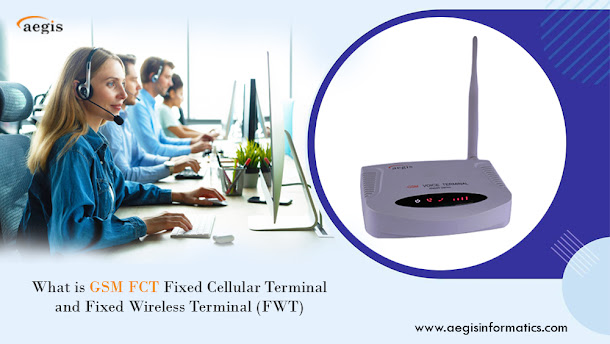In this blog, we provide introduction to a GSM FCT fixed cellular terminal, the interfaces that an FCT supports, how an FCT enables an enterprise PBX to make calls over GSM/CDMA, some of the FCT's applications, and also an introduction to a Fixed Wireless Terminal (FWT), which supports 3G and 4G data in addition to voice.
Have you ever noticed that some calls from landlines are received on your cell phones as cell phone numbers? There is a significant likelihood that the FCT was used to dial their enterprise PBX. An apparatus called a fixed cellular terminal enables the company PBX to place and receive calls across GSM/CDMA networks. The Fixed Cellular Terminal can connect to the enterprise PBX's trunk ports as "Trunks" and store one or more GSM/CDMA SIM cards. The choice of which network to route outgoing calls to is made by the PBX, which may include both wireline and trunks for Fixed Cellular Terminals. The PBX often makes this decision using an LCR - Least Cost Routing - calculation. If your business uses a landline to make calls to mobile phones, the calls may be forwarded through the GSM FCT because mobile to mobile calls are less expensive. If the calls are to landlines, the telephone company's standard analog trunk lines may be used to carry them. Depending on the vendor, FCT supports up to eight GSM/CDMA SIM cards or even more. GSM FCT is a straightforward tool that has the potential to save a lot of money. Check out the following examples to see how:
Applications of Fixed Cellular Terminals GSM FCT :
Suppose a business has a branch that is on a hill, in a rural village, or otherwise inaccessible but has GSM/CDMA cellular service. In that case, the PBX at that branch could use an GSM FCT as its trunk lines to make and receive calls. Although it doesn't save costs in this case, it helps provide remote places with less connectivity.
Reduction of dialing fees when calling firm employees' cell phones: Remember this: Typically, a cellular carrier has a business relationship with an organization. Consequently, the company's whole workforce typically uses the same mobile service provider. Most calls made between coworkers (within the business) are either free or have very low rates. But the truth is that help desk staff, receptionists, and sometimes even employees will call other staff members from landlines. This means that there would be significant financial savings if your PBX were set up to route all of these calls through the telephone call recorder GSM FCT on the cellular network. Since calling from a cellphone to another cellphone is less expensive than from a landline to a cellphone, this might also apply to other cellphones.
More affordable One Number service: Many PBX support what is known as One Number service, all individual employee calls are sent to a landline in the mornings and a cell phone in the evenings. Some PBXs also provide parallel ringing, where by a call is transferred to the phone that connects first out of a landline and a cell phone. However, there is one drawback to this service: when a call is redirected, the cellular network is charged based on the number of minutes. This is a call that just came in! As a result, when FCT is used in conjunction with a GSM/CDMA SIM card from the same cellular service provider as the corporate cellular service provider, there won't be any additional fees or very little fees when calls are forwarded because the mobile SIM card is calling the same mobile SIM card (from the same cellular service provider) and both have a corporate connection. Due to this, the service is both practical and affordable.
Fixed Wireless Terminal :
Similar to FCTs, Fixed Wireless Terminals also offer phone communication, but they also offer data connectivity over 3G, IP Fax, internet, built-in Wi-Fi, mini-switch, and other services. However, this one is more frequently used as a replacement for fixed line broadband. As a result, you may insert your GSM SIM card into the FWT and connect your laptop or computer to it to access 3G data. You can connect an analog phone to the FWT's RJ-11 connection and use it to receive calls on your cell phone from a landline. They also support tiny switches and Wi-Fi connectivity for connecting additional computers. For SOHOs, small offices, households, and even offices who don't want to invest in PBX/Wireline systems, this could be quite helpful.
